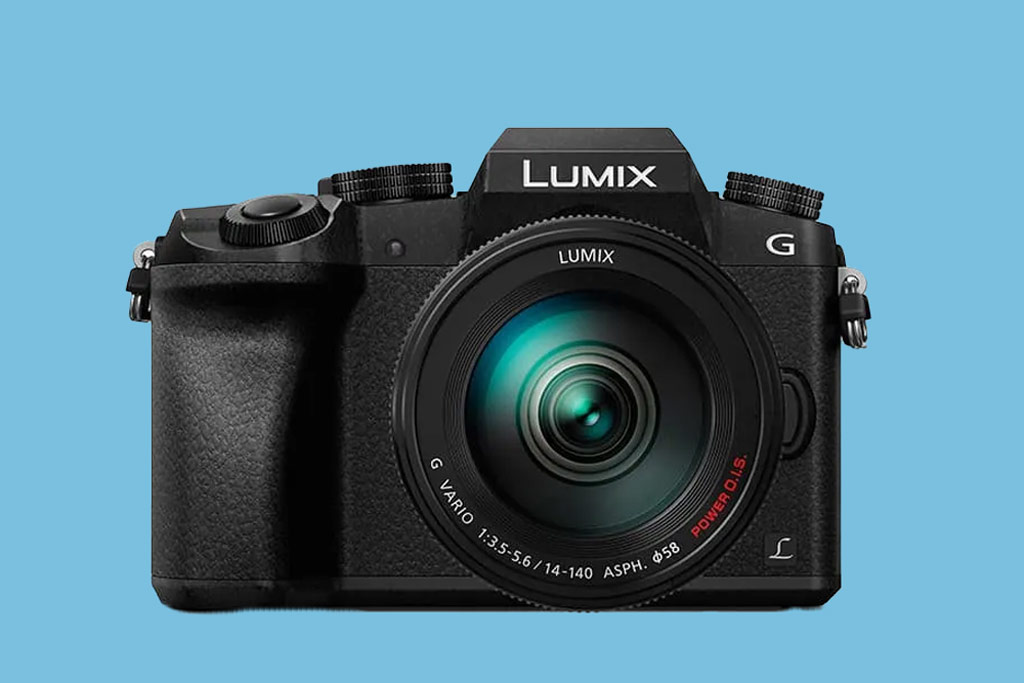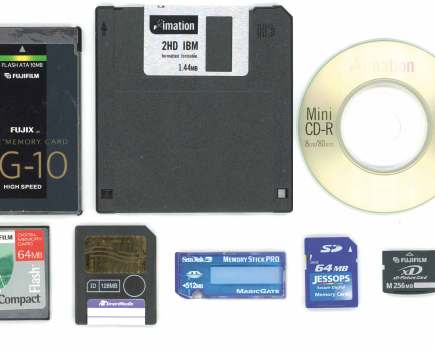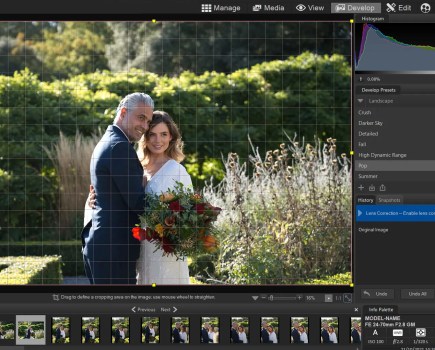In this guide, we’re counting off the best cameras under $500 / £500, and that can be a trickier ask than you might expect. Cheap cameras aren’t as common as they used to be, the market having been somewhat decimated by the rise of the smartphone, and people’s expectations for a camera at this price have changed accordingly. Now, in order for a camera to justify a cost of $500 / £500, it has to offer something a smartphone doesn’t, whether that’s superior image quality, a broad lens range, or extra physical features like waterproofing. And no, these features are not just reserved for the top cameras for photography. As such, we’re not just counting off cheapo bargain cameras here – we’re looking at some of the best compact cameras you can buy, and even a few excellent interchangeable-lens models.
Generally, the trick to getting a great camera for a cheap price is to look on the second-hand market, and many of the models we’ve included on this list are a good few years old and mostly available used. We’ve taken our extensive testing and reviewing experience and applied it to this list to determine which cameras are actually worth your money.
Best cameras under $500 / £500: the quick list
Looking for the best deal on cameras under $500 / £500? Not only will you find the best second-hand cameras, but you’ll also find some of the best second-hand camera deals, as our ‘Buy now’ buttons are set to automatically take you to the best prices, from trusted retailers, plus you’ll also find a list of other retailers below each camera, so you can find the right deal for you.
Our guide includes cameras that are available in the US and the UK, with $500 / £500 as our rough guide. Bear in mind that prices and exchange rates do fluctuate in both territories and while we keep this guide regularly up to date, sometimes a camera will nudge over the $500 / £500 mark in one territory or another. In general, it won’t be too significant.
So, here is a quick rundown of the cameras we’ve included, along with links to get the best prices:
- Panasonic Lumix DMC-G7 with 14-42mm lens – Buy now
- Canon EOS 2000D / Rebel T7 with 18-55mm lens – Buy now
- OM System Tough TG-7 – Buy now
- Panasonic Lumix TZ100/ZS100 – Buy now
- Panasonic Lumix GX80 – Buy now
- Panasonic Lumix GX880 – Buy now
- Panasonic Lumix TZ99/ZS99 – Buy now
- Sony Alpha A6000 – Buy now
- Nikon D3500 with 18-55mm VR lens – Buy now
Why you can trust Amateur Photographer
We spend many hours testing every product we recommend, in detail, in a variety of situations and shooting scenarios, and only use experts for our reviews, so you can be sure that you’re getting the best products. Find out more about our expert writers.
Panasonic Lumix DMC-G7 with 14-42mm lens
Amateur Photographer verdict
It’s fairly dated at this point, but the Lumix G7 still has a lot going for it, not least the extremely tempting price tag. An ideal on-ramp for Micro Four Thirds.- Electronic shutter runs fast and silently
- Useful control dials
- High-res EVF
- 4K Photo modes are laggy (early days)
- Somewhat plasticky build
At a glance:
- 16MP Live MOS Four Thirds sensor
- Micro Four Thirds lens mount
- 4K video with 4K Photo modes
- 49-area AF system
- Price: $497 / £449 with lens
This Micro Four Thirds mirrorless camera from Panasonic may date back to 2015, but it’s still available new with a 14-42mm lens for less than $500 / £500 all-in. This makes it one of the best-value buys for those who prefer to avoid the second-hand market, and you get a hell of a lot of camera for your money. The Lumix G7 was released in the early days of Panasonic’s exploration of 4K (in our review in the AP magazine at the time, we adorably referred to 4K as a new ‘buzzword’), and it also included 4K Photo modes. These allow for the extraction of 8MP stills from 4K footage, effectively giving you a 30fps burst mode – which even now is hardly something to turn your nose up at.
The Lumix G7 is a fairly dinky little camera by modern mirrorless standards, but it manages to fit on some control dials for aperture and shutter speed control, as well as a free-angle rear display. This makes it a satisfying camera to use and control, and we also especially like the 2.36-million-dot electronic viewfinder, which is an excellent example of its type.
Capable of producing both high-end 4K video and technically impressive still images, the Lumix G7 is a compelling package for hybrid content creators, and with a bargain price that continues to impress.
Read our Panasonic Lumix DMC-G7 review.
Canon EOS 2000D / Rebel T7 with 18-55mm lens
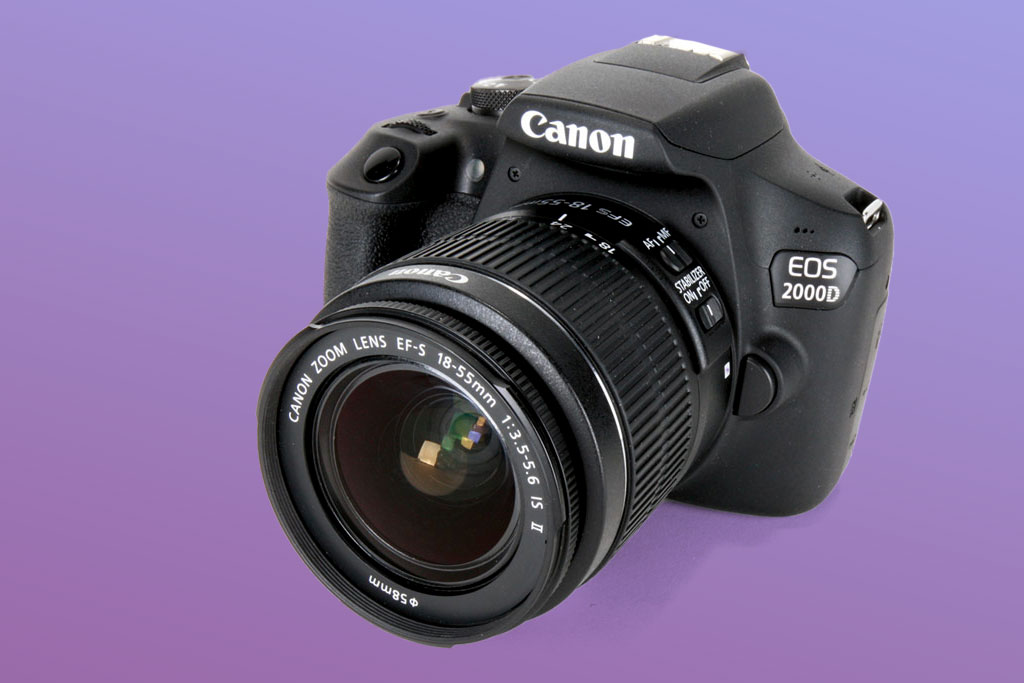
Amateur Photographer verdict
A quintessential beginner’s camera, the EOS 250D continues to be a mainstay of college photography courses, and it’ll serve beginner photographers very well indeed.- Easy to use for newbies
- Solid APS-C image quality
- Lots of lenses available
- Fixed, non-touch LCD screen
- Small RAW shot buffer
At a glance:
- 24.1MP APS-C sensor
- Canon EF-S lens mount
- 9-point AF system
- Full HD video
- Price: $399 / £459
One of Canon’s cheapest entry-level DSLRs, the EOS 2000D does more to justify itself than its bare-bones stablemate, the EOS 4000D. Thanks to its 24.1MP APS-C sensor, it’s capable of producing images of impressive quality and depth, and a selection of Picture Styles can be applied to give your images a specific ‘look’ in-camera. Handling-wise, the EOS 2000D is everything you’d expect from a DSLR, with a solid pentamirror viewfinder that provides an immediate view of your shooting area. The LCD screen is fixed and not touch-sensitive, but you can’t have everything.
The EOS 2000D isn’t the speediest camera, but it manages a burst rate of 3fps and can do so for a decent amount of time. We tested this functionality out in our full review and found we could get 40 consecutive full-size JPEGs before the camera started to to stutter – not bad. In RAW format, this fell to a rather stingier 10, though, in all honesty, the EOS 2000D is more designed for the kind of photographer who’s going to be using JPEGs anyway.
As a Canon EF DSLR, the EOS 2000D gives you a huge range of lenses to choose from. This configuration comes with an 18-55mm lens bundled in while keeping comfortably under our $500 / £500 spending limit. This lens isn’t going to blow anyone away, but it’s perfectly serviceable and provides a solid foundation to work on. If you wanted, you could probably pick up a Canon EF 50mm f1.8 STM lens as well for something a bit more interesting, and still stay more or less within your budget.
Read our Canon EOS 2000D / Rebel T7 review.
OM System Tough TG-7
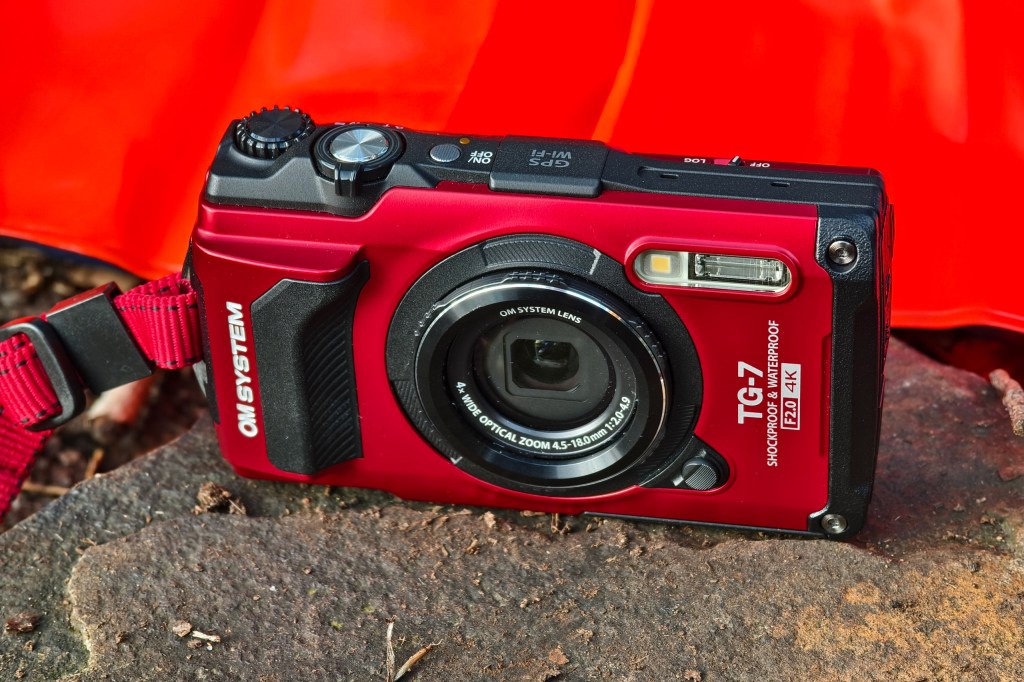
Amateur Photographer verdict
The refresh of Olympus’ longstanding Tough TG line under the OM System banner doesn’t change very much, which makes it still one of the best waterproof cameras you can buy.- Compact, tough, waterproof
- GPS, Wi-Fi, Bluetooth built-in
- Great macro performance (even underwater)
- Optical zoom lens
- Small sensor
- RAW needed for best results
At a glance:
- 12MP 1/2.3-inch image sensor
- 4x optical zoom; 25-100mm (35mm equivalent)
- Waterproof, shockproof, crushproof, freezeproof
- 4K video
- Price: $549 / £499
The waterproof compact camera market isn’t nearly as well populated as it used to be – so it was nice to see the relatively recent arrival of the OM System Tough TG-7, a continuation of the Olympus Tough range before the Olympus imaging division was sold to OM Digital Solutions. It’s not much of a change from what came before, but it didn’t need to be – the Tough TG cameras were already regarded as pretty much the best tough compacts you could buy.
Sporting a 25-100mm equivalent optical zoom lens with an f/2 maximum aperture, the TG-7 provides real versatility for waterborne and extreme sports shooting. Its tough credentials are impeccable – you can drop it, drown it, kick it, jump on it, and it’ll keep on working. It also offers a number of specialised shooting modes for different shooting situations. The Underwater Macro modes are great for getting close-up images of subjects from your dives, and there’s also the option to shoot in RAW to exercise greater control over the look of your images.
All this has come with a bit of a price hike, and the TG-7 only just makes the cut for this guide. If your budget stretches to it, however, it really is the best waterproof camera on the market – see our guide to the best waterproof cameras to get an overview of the competition.
Read our OM System Tough TG-7 review.
Panasonic Lumix TZ100/ZS100
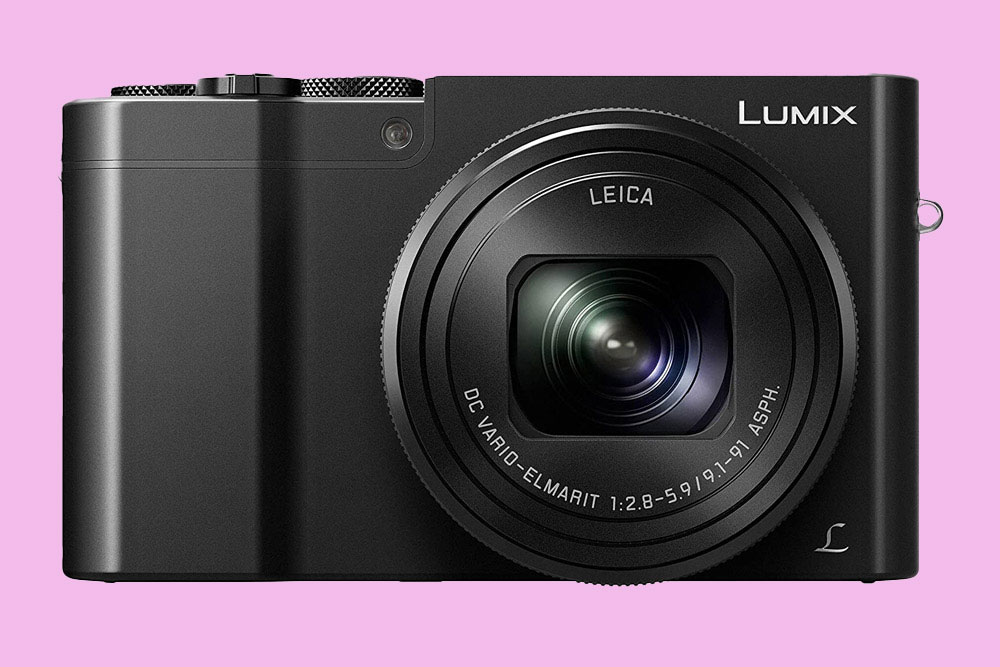
Amateur Photographer verdict
The Lumix TZ cameras are still some of the most popular travel cameras around, thanks to the winning combination of a generous zoom lens with a small, pocketable body.- Useful do-it-all zoom lens
- Small and pocketable
- 5-axis stabilisation
- Small electronic viewfinder
At a glance:
- 20.1MP 1-inch image sensor
- 10x optical zoom; 25-250mm (35mm equivalent)
- 4K video
- 5-axis image stabilisation
- Price: $597 / £389
The Lumix TZ100 is another handy travel compact with a built-in 10x zoom lens, equivalent to 25-250mm, and an aperture range of f/2.8-5.9. This covers a decent range of wide-angle to telephoto situations, while Panasonic’s Depth From Defocus technology enables fast autofocus.
The Lumix TZ100 is built around a 1-inch, 20.1MP sensor. It’s a really well-designed camera that looks especially swish in its grey-and-silver configuration, although an all-black version is also available. Ergonomically, the TZ100 benefits from a small handgrip plus a thumb rest on the back for a secure grip, with all the camera’s buttons clearly labelled and falling within easy reach. We especially like how Panasonic has managed to cram four Function buttons onto the camera, each of which can be assigned to a function you regularly use.
The camera also comes with hybrid optical/electronic 5-axis image stabilisation, which helps to keep images sharp when shooting hand-held or using slower shutter speeds. The main drawback is a rather small electronic viewfinder, though it does offer a 1.16-million-dot resolution. A 3-inch rear LCD with touch sensitivity further helps with the handling.
You can also record 4K video, process raw files in-camera and access a small pop-up flash. The Panasonic is very compact too, weighing in at just 312g with battery and card. Those looking for a pocketable camera with a powerful zoom, excellent customisation and good image quality need look no further.
Read our Panasonic Lumix DMC-TZ100 Review
Panasonic Lumix GX80
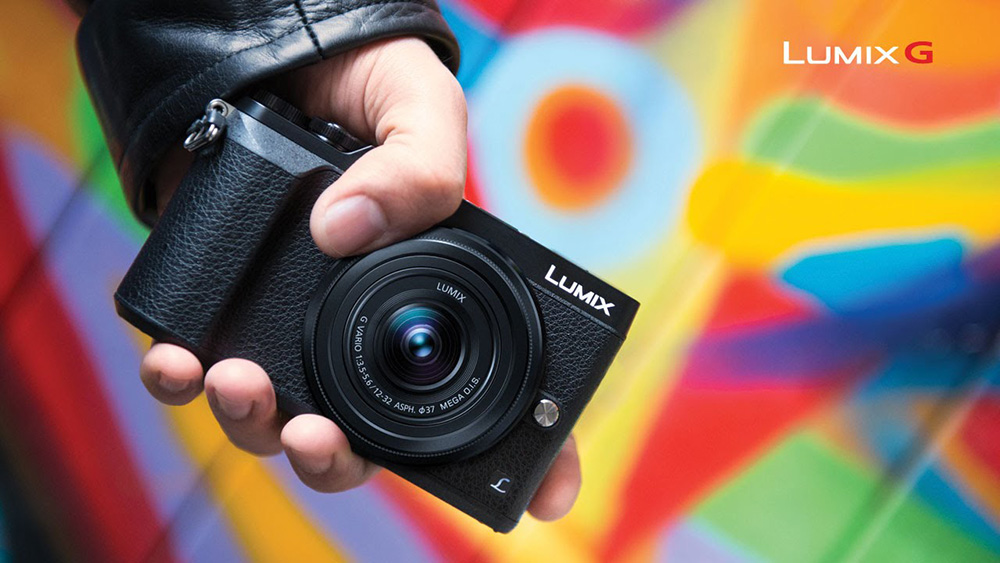
Amateur Photographer verdict
A great mid-range choice that has undergone some tempting price drops. Ergonomics are great, and there are plenty of clever shooting features.- Great ergonomics and handling
- Clever 4K burst features
- Price has come down
- No mic socket for video
At a glance:
- 16MP Four Thirds sensor, no optical low-pass filter
- Micro Four Third lens mount
- Dual IS: 5-axis in-body stabilisation working with 2-axis in-lens
- 4K video recording and 4K Photo mode
- 2.76-million-dot equivalent EVF (16:9 aspect ratio)
- Price: $549 / £449
The Lumix GX80 hails from the time when it seemed like Panasonic was bringing out a new enthusiast-focused camera every other day. Those days are certainly over now, but they produced some excellent mid-range choices that are still highly credible today, especially with prices having come down in the intervening years.
The GX80 sports the one-two punch of effective 5-axis stabilisation and high-quality 4K video, making it as fearsome for video as it is for stills. It also offers 4K Photo modes that allow for high-quality stills to be extracted from 4K footage, meaning you effectively have a 30fps burst mode – as has been completely standard on Panasonic cameras for a long time. This was also one of the first cameras to offer Post-focus, Panasonic’s clever feature that allows for an image’s focal point to be selected post-capture (it basically whips through a series of frames at every focal distance, then lets you pick the keeper).
Design-wise, the rangefinder feel of the Lumix GX80 won big with us in our review at the time, and still does today; it’s a comfortable, satisfying camera to hold. The shutter is also quiet, which is handy for street shooting, and we were generally impressed with image quality across the board. That is, until you get to the top ISO settings, which we wouldn’t recommend using unless absolutely necessary.
A throwback of a camera in multiple ways, the Lumix GX80 makes for a superb sub-£500 buy.
Read our Panasonic Lumix GX80 review
Panasonic Lumix GX880 with 12-32mm lens
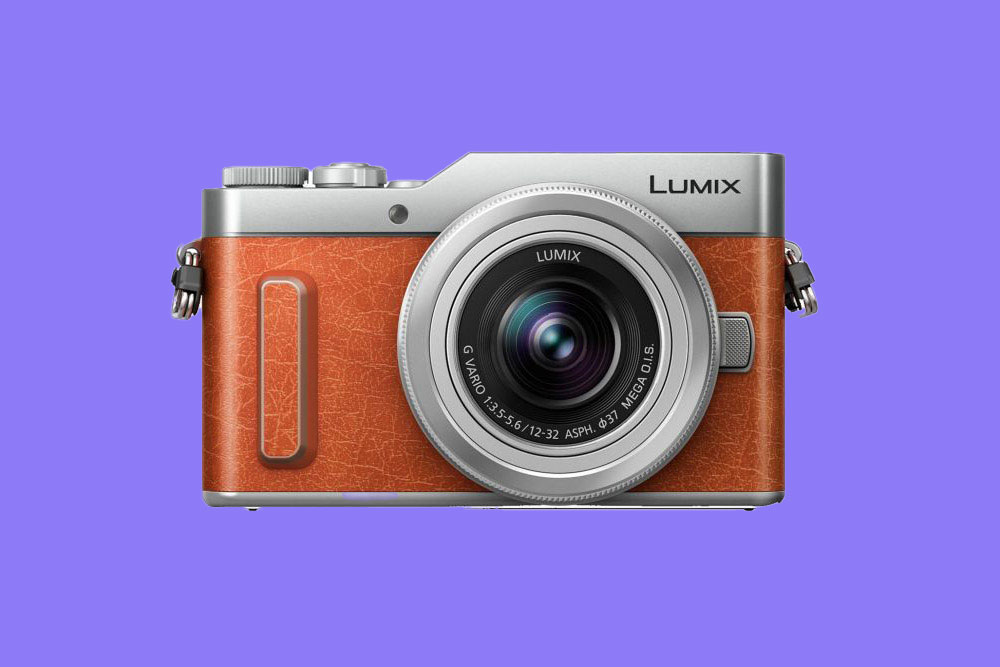
Amateur Photographer verdict
It may be absolutely tiny, but the Panasonic Lumix GX880 still packs in plenty of useful features and a variety of shooting modes.- Tiny for a mirrorless camera
- 180-degree tilting screen
- Not available in all territories
- Will be too small for some
At a glance:
- 16.1MP Micro Four Thirds sensor
- Micro Four Thirds lens mount
- 4K video at 30p, 25p or 24p
- 5.8fps shooting in high burst mode
- Price: $465 / £349
Moving on to interchangeable-lens mirrorless models, this attractive Panasonic Lumix camera has a 16.1MP Micro Four Thirds sensor without a low pass filter for better image quality. Since the camera uses a Micro Four Thirds lens mount, you can use a wide variety of MFT lenses from both Panasonic and Olympus, greatly extending the camera’s versatility.
Other useful features include the ability to shoot at up to 5 frames per second in burst mode, and an LCD display that tilts 180º to face the camera user. It’s great for selfies in other words; there are additional modes for taking selfies at night and a wide 4K option, so you can get more of the background into your self-portraits.
A portrait mode enables you to soften your subject’s skin and slim their faces, so this is a great choice for families, travellers and vloggers as it records 4K video and has built-in Wi-Fi. Taking advantage of 4K technology, users can enjoy 4K PHOTO as well as variety of related functions such as Focus Stacking, Post Focus and Light Composition. For more creative freedom, Creative Control, Creative Panorama and Photo Style including L.Monochrome mode are included.
The GX880 is also capable of shooting images in RAW format and developing them inside the camera. For those who are new to digital interchangeable lens system cameras, the Gx880 provides a variety of shooting assist functions such as iA (Intelligent Auto) mode and Scene Guide. All-in-all, it’s a beautiful-looking camera with a potent mix of shooting options.
Panasonic Lumix TZ99 / ZS99

Amateur Photographer verdict
A 30x zoom compact that will fit in your pocket – this is a great performer in the right conditions. The USB-C charging port means you can use the same charger as your phone and laptop.- A 30x optical zoom
- Front-facing touchscreen
- In-camera USB-C charging
- Poor low light performance
- No viewfinder
At a glance:
- Price as reviewed: $698 / £469
- 20.3MP 1/2.3-inch MOS sensor
- 24-720mm f/3.3-6.4 (35mm) equivalent 30x zoom LEICA DC Vario-Elmar lens
- USB-C in-camera charging
- 3-inch, 1840k-dot, touch-sensitive TFT LCD
The TZ99 has a 30 x optical zoom capability that is significantly better than any current smartphone can currently deliver, making a camera like this appealing for a number of genres, such as travel and wildlife. Video recording is available at 4K 30fps and you can use a front-facing screen for selfies and recording pieces to camera – with recording time of up to 90 minutes in 4K and 100 minutes if recording in Full HD.
Other specifications of note include USB-C charging, built-in Wi-Fi and Bluetooth, and the ability to record in raw format.
You can get some good shots in good light that’s not too bright or contrasted. You’ll get the best results holding the camera quite still and photographing things that don’t move too rapidly.
A great choice for those looking for something to take on their travels; however, be aware that in low light, it suffers by comparison to its larger sensor rivals. If you’re mainly going to be using it on your sunny holidays, you shouldn’t worry too much about that. The TZ99 remains excellent value for money at under £500.
Read our Panasonic TZ99 review
Sony A6000 with 16-50mm lens
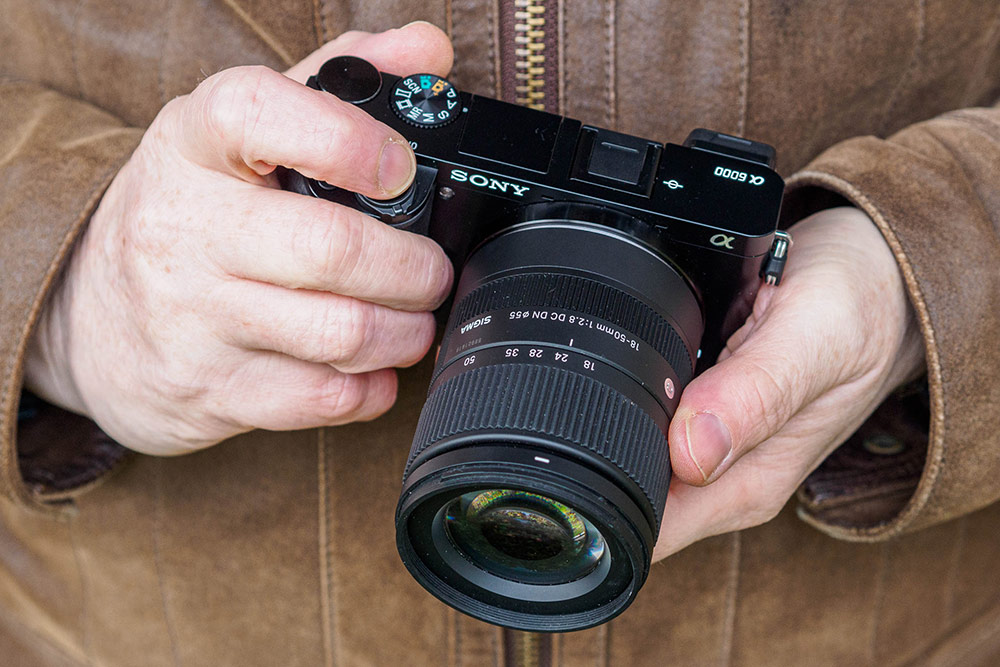
Amateur Photographer verdict
One of the most enduringly popular beginner mirrorless cameras around, the Sony A6000 has aged beautifully since 2014, with fast autofocus and excellent image quality.- Super-fast burst and AF
- Generous shot buffer
- APS-C sensor
- No 4K or mic socket
At a glance:
- 24.3-million-pixel Exmor APS HD CMOS sensor
- Sony E lens mount
- Fast 0.06sec autofocus time
- Full HD video
- Price: used from $600 (with lens) / £300 (body-only)
Despite being launched back in the spring of 2014, there is still a lot to like about this mirrorless veteran, especially at this price. It features a 24.3MP Exmor APS HD CMOS sensor that delivers reasonably high-resolution images, backed up by an improved Bionz X image processing engine.
This is still a pretty nippy camera too, offering a fast 0.06sec autofocus time and a 179-point hybrid AF system, covering almost 100% of the frame. The Alpha 6000 has 25 precision contrast-detection AF points. The hybrid autofocus system not only makes it easier for the camera to recognise scenes, but it also boosts the ability of the Alpha 6000 to lock onto the correct subjects and track them tenaciously.
In addition, the A6000 can shoot 11fps of RAW+JPEG for 21 frames or 49fps of fine JPEG before it begins buffering. There is also a tilting LCD, a pop up electronic viewfinder with 1.44-million dot resolution providing 100% frame coverage, and Full HD video recording (but not 4K, unfortunately).
Most of the camera’s weight sits in the grip, which houses the battery and memory card, but this is countered by the weight of the lens, making the Alpha 6000 well balanced. It’s comfortable to operate one-handed. Top-spec technology and a host of cutting-edge features have given the Alpha 6000 longevity and keeps it competitive even today.
Read our Sony Alpha 6000 Review
Nikon D3500 with 18-55mm VR lens

Amateur Photographer verdict
Another one of the last great beginner DSLRs, the Nikon D3500 is still going to provide a superb learning platform for any budding photographer.- Great for beginners
- Huge F-mount lens range
- Solid image quality
- Fairly basic AF system
At a glance:
- 24.2MP APS-C CMOS sensor
- Nikon F lens mount
- Full HD video at 60p
- 11-point AF system
- Price: $650 (with lens) / used £300 (body-only)
Now we move on to budget DSLRs, and this is certainly one of the best options for beginners. While the market momentum is with mirrorless cameras at the moment, DSLRs remain great value and can take a very wide choice of affordable lenses. The D3500 is an APS-C (DX) format DSLR that features a still-very-capable 24.2MP sensor, a decent sensitivity range up to ISO 25,600, and the ability to shoot at up to 5 frames per second.
It also comes with a Guide Mode that helps beginners figure out the essential functions in order to take better pictures. There is also full manual control for more confident photographers. For a DSLR, the D3500 is relatively compact and lightweight at 365g, and it can record full HD video.
Although the sensor has the same effective 24.2MP resolution as Nikon’s earlier D3400 and D5600 cameras, the sensor in the D3500 is an updated version. It does away with an optical low-pass filter to help maximise the sensor’s ability to resolve fine detail images.
The D3500 is also notable for its a great body design, deep grip and an intuitive layout of controls that make it straightforward to use. You’ll also find a range of Nikon lenses available, with Nikon ‘DX’ lenses being specifically designed for the the camera’s APS-C sensor. The D3500 remains not only a great Nikon DSLR but a great Nikon DSLR full stop.
Read our Nikon D3500 DSLR Review
How to choose the best cameras under $500 / £500
Recommended second-hand dealers to buy from include:
- Wex Photo Video
- Park Cameras
- Clifton Cameras
- MPB
- Castle Cameras
- FFordes
- London Camera Exchange
- CameraWorld
- Worldwide Camera Exchange
- Mifsuds
- Grays of Westminster (for Nikon)
- BH Photo Video (USA)
- Adorama (USA)
If you’re not sure where to start with choosing your cheap camera, don’t worry. There are a few questions you can ask yourself before you start looking that will make things easier.
To start, one of the first things worth ticking off is figuring out whether you want an interchangeable-lens camera (i.e. a DSLR or a mirrorless camera) or a fixed-lens compact? Interchangeable-lens cameras, as the name implies, allow you to change lenses. If you have another lens of the same mount (e.g. Nikon F, Canon RF, Micro Four Thirds, etc) you can swap it out at will. This gives you a great deal of versatility – but naturally, extra lenses will cost more money.
Compact cameras have a fixed lens that cannot be changed. Sometimes it’s a prime lens, more commonly it’s a zoom. This gives you an all-in-one package that tends to be very affordable, with the downside being restrictiveness. If you buy a compact with a 24-72mm lens, you’ll be never be able to go wider or longer than that focal range.
What’s also worth thinking about is sensor size. Cameras have sensors of different physical sizes – larger sensors give you better, richer images, with more detail and better dynamic range (see our guide to APS-C vs full-frame for a detailed rundown). However, as you might have guessed, these cost more, and require physically larger camera bodies to house. And on that subject – how portable do you need your camera to be? Do you want to slip it into a pocket, or is a little extra weight not too much of a concern?
You should look at the resolution of your sensor, which is measured in megapixels (MP). You might think you want as many of these as possible, but this is only the case if you’re planning to print images. If you only want to share images on social media, then all those pixels will only clog up your cards and hard drives.
Planning to shoot video? Check the video resolution and frame rate of each camera on this list, as well as whether they have videographer-friendly features like a mic input socket for clean audio.
If your budget is lower than $500 / £500, we have some handy guides to the best cameras under $300 / £300 and the best cameras under $200 / £200. Alternatively, if you’re feeling a bit more flush, you can upgrade to our guide to the best cameras under $1000 / £1000.
Related reading:
- What are the best value DSLRs?
- What are the best mirrorless cameras you can buy?
- Which are the best DSLRs you can Buy?


